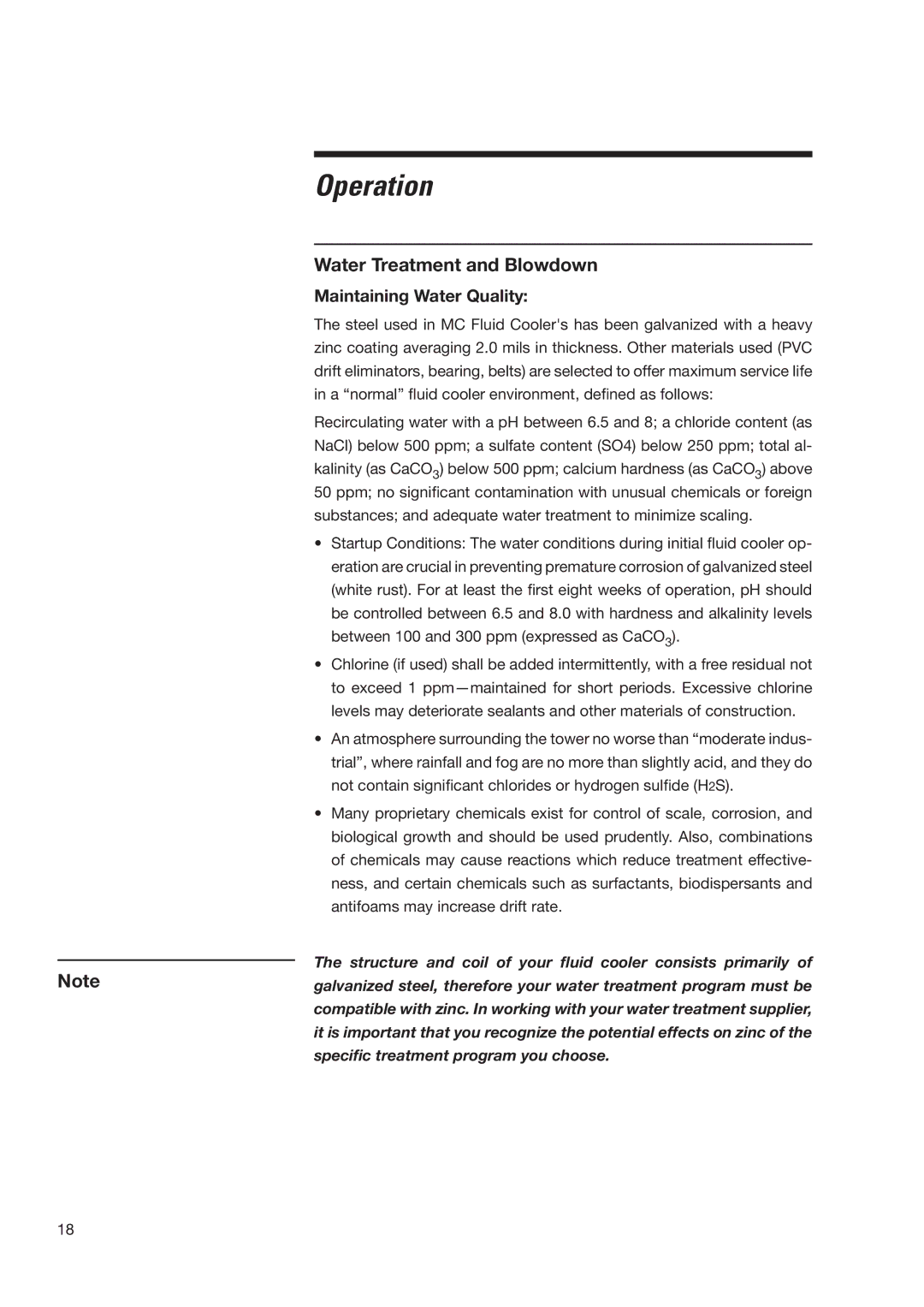
Operation
Water Treatment and Blowdown
Maintaining Water Quality:
The steel used in MC Fluid Cooler's has been galvanized with a heavy zinc coating averaging 2.0 mils in thickness. Other materials used (PVC drift eliminators, bearing, belts) are selected to offer maximum service life in a “normal” fluid cooler environment, defined as follows:
Recirculating water with a pH between 6.5 and 8; a chloride content (as NaCl) below 500 ppm; a sulfate content (SO4) below 250 ppm; total al- kalinity (as CaCO3) below 500 ppm; calcium hardness (as CaCO3) above 50 ppm; no significant contamination with unusual chemicals or foreign substances; and adequate water treatment to minimize scaling.
•Startup Conditions: The water conditions during initial fluid cooler op- eration are crucial in preventing premature corrosion of galvanized steel (white rust). For at least the first eight weeks of operation, pH should be controlled between 6.5 and 8.0 with hardness and alkalinity levels between 100 and 300 ppm (expressed as CaCO3).
•Chlorine (if used) shall be added intermittently, with a free residual not to exceed 1
•An atmosphere surrounding the tower no worse than “moderate indus- trial”, where rainfall and fog are no more than slightly acid, and they do not contain significant chlorides or hydrogen sulfide (H2S).
•Many proprietary chemicals exist for control of scale, corrosion, and biological growth and should be used prudently. Also, combinations of chemicals may cause reactions which reduce treatment effective- ness, and certain chemicals such as surfactants, biodispersants and antifoams may increase drift rate.
The structure and coil of your fluid cooler consists primarily of
Notegalvanized steel, therefore your water treatment program must be compatible with zinc. In working with your water treatment supplier, it is important that you recognize the potential effects on zinc of the specific treatment program you choose.
18
